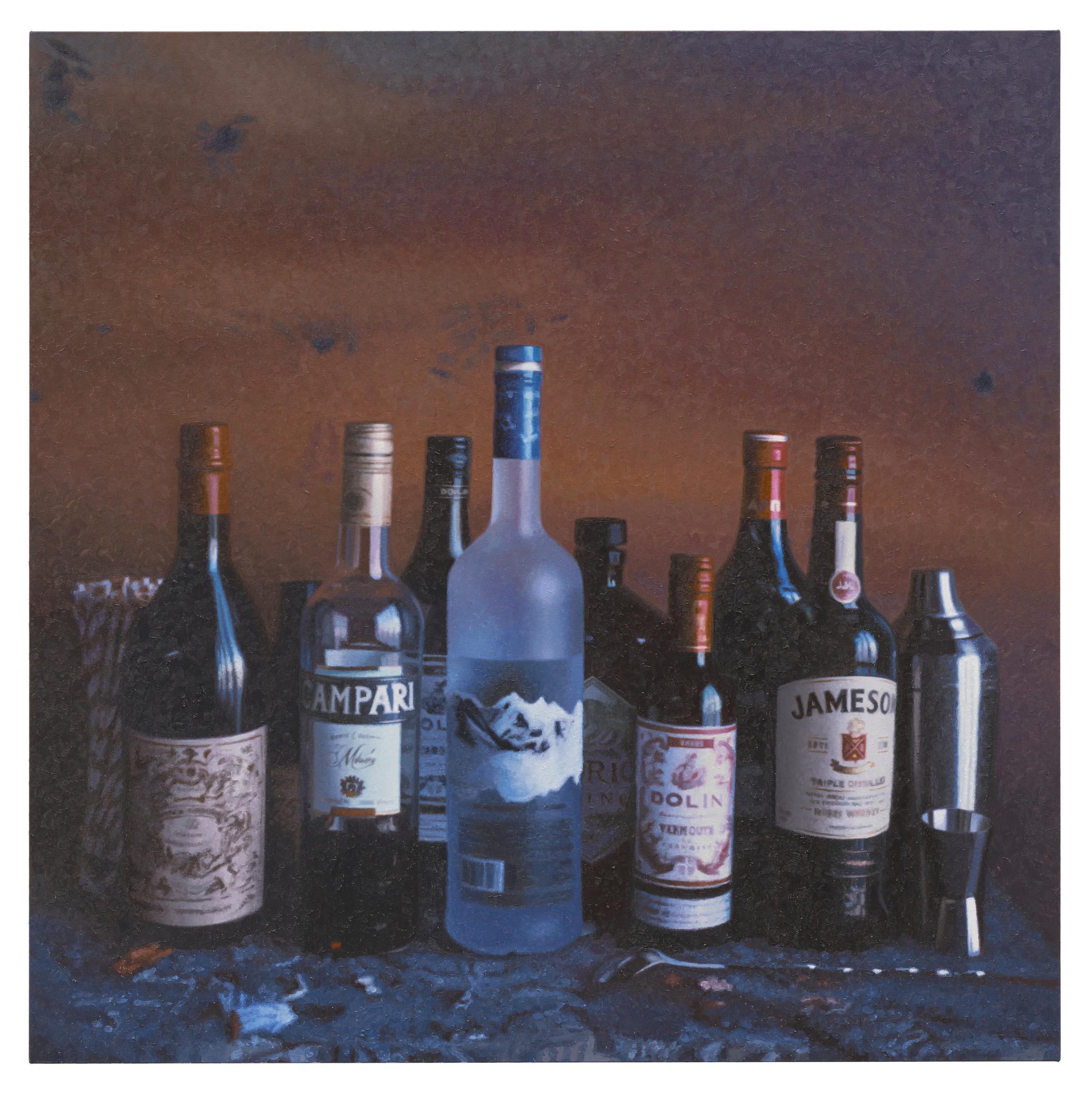
Work of the Week is excerpted from The Back Room, our lively recap funneling only the week’s must-know art industry intel into a nimble read you’ll actually enjoy. Artnet News Pro members get exclusive access—subscribe now to receive this in your inbox every Friday.
Rudolf Stingel’s current exhibition at Gagosian in New York feels brooding and nostalgic.
It consists of several components: A vast carpet of orange and blue stripes covering the entire gallery floor, soft under one’s foot; three modestly sized photorealist paintings of liquor bottles, a martini glass, and bar accessories; and exposed wood framing around the entrance. The 1972 rock album “Smokin’,” by the English band Humble Pie, blasts on a continuous loop, which is a fresh and unexpected gesture in the hushed halls of a mega gallery.
Taken as a whole—which is how the show is being marketed to clients, at a price of $3.5 million—the parts form a self-portrait, of sorts: Intimate, moving, and a little bit sad, in a manly-man, shaken-not-stirred kind of way. The works were painted in 2020, at the start of the pandemic, which may explain their insular tone.
Rudolf Stingel, Untitled (2020), at Gagosian gallery. Photo: Katya Kazakina
The artist is taking stock, it seems, looking back to his youth in the Tyrolean Alps and memorable exhibitions he has staged along the way. The carpet harkens back to 1991, when Stingel first used the material at Daniel Newburg Gallery in New York, and its pattern is nearly identical to the pink-and-red one he installed at Paula Cooper in 1997.
The palette of the paintings—hazy, velvety blues and oranges that recall burning coals—evoke the massive sunset paintings he showed at Gagosian in 2017, as well as one of his first abstract paintings, from 1986. The bottles of Hendrick’s gin and Dolin vermouth are painted in the same style as his lucid self-portraits, one of which fetched $10.6 million at Christie’s in 2017, when it was sold by François Pinault.
That year Stingel’s market was at its peak, with annual auction sales soaring to $52.1 million. It has taken a nosedive since then, falling to $6.3 million last year. Those were the days, the artist seems to say, as he pushes forward, with gusto, through an ever-changing terrain.